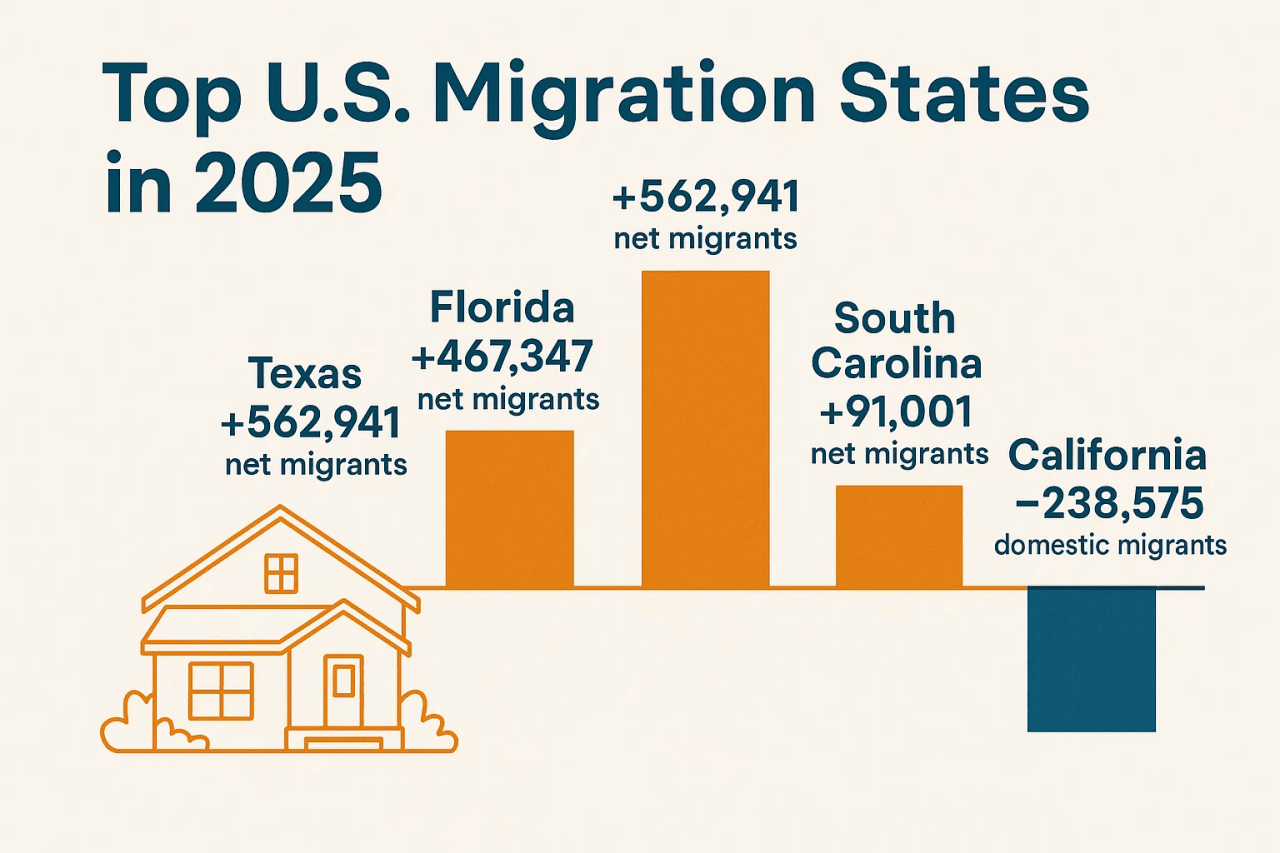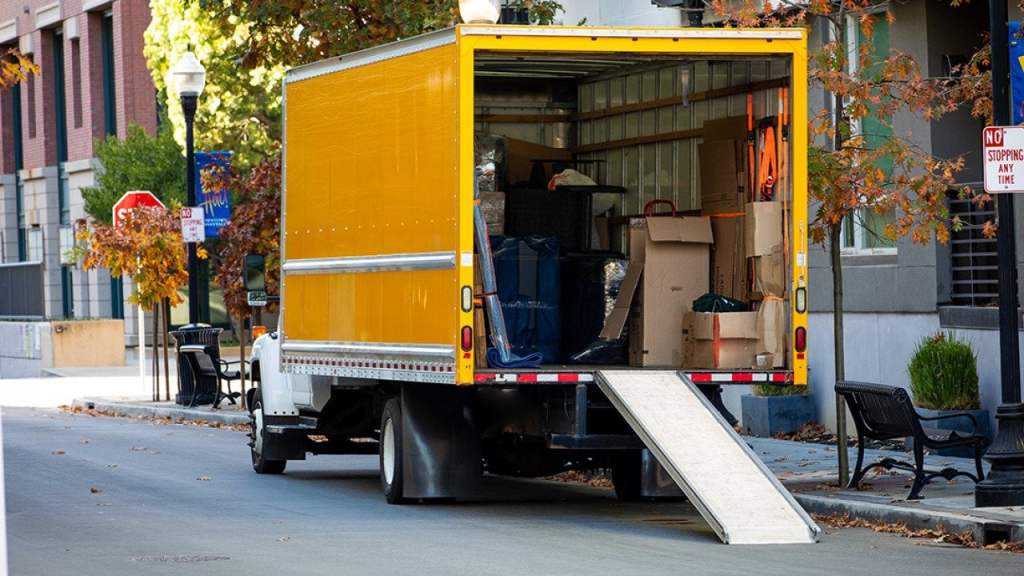Where and why Americans are moving in 2025
Published 6:00 pm Wednesday, July 23, 2025
Where and why Americans are moving in 2025
America is a nation built by pioneers; people who strove to push on to new places rather than staying where they were and risking stagnation.
This spirit is still alive and well in the 21st century, and while the land might have been tamed, the compulsion to keep moving drives many homeowners to up sticks and relocate to an entirely different state.
Of course, some locations are a big draw for long-distance movers, outshining their counterparts in other regions. The reasons that hotspots emerge are always changing, as are the popular places themselves.
Trending
This overview from Offerpad investigates where Americans are picking to start the next chapter of their lives in 2025, and what factors hold the most weight at the moment.
States with the Highest Net Migration
The simplest way to determine which states are attracting the most potential residents is to examine net migration data. The latest figures from the U.S. Census Bureau (USCB) paint an interesting picture of a nation with 340 million people now calling it home, representing a 1% year-on-year increase.
In simple terms, the front-runners are:

Offerpad
Texas
Leading the bloc of Southern states that have seen the greatest rise in net migration, Texas added 562,941 people to its population, according to official figures. This leaves it with a little over 31 million residents, which is still a way behind the 39 million people living in California, America’s leading state in terms of both population and economic might.
Trending
The net migration figure alone is just part of the story, as Texas also experienced the country’s largest increase in domestic migration. Approximately 85,267 people relocated to the Lone Star State from other parts of the U.S. In comparison, California actually saw a net domestic migration dip of 238,575, which reframes the rising appeal of Texas.
Florida
Another Southern state that continues to prove popular with movers is Florida, which added 467,347 newcomers in the past year for which data is available. This equates to a 2% increase, which is significantly above the average across all U.S. states, and only just behind the 2.2% growth rate accounted for by the fastest-growing location overall, the District of Columbia. While D.C. may not be a state in its own right, it is given state-equivalent status by the USCB, so still deserves a mention.
South Carolina and North Carolina
While net migration figures for South Carolina are not as impressive as those for Texas or Florida, at 91,001, or a 1.7% year-on-year rise, a head-turning figure lurks in the deluge of data that needs to be discussed. Specifically, its domestic migration reached 68,043, which is the highest proportion of its net total among all states.
In simpler terms, more people already living elsewhere in the U.S. chose to move to South Carolina compared to any other state, at least when considered proportionally, given its somewhat modest population of 5.479 million. In fact, it managed to oust Texas to top the most recent U-Haul report on domestic moving.
Neighboring North Carolina also performed well in the net migration states, actually sitting in fourth place, behind California, in terms of the total, which sat at 164,835. This represents a 1.5% overall rise, with 82,288 domestic migrants included in this number. So, only Texas topped it in raw terms.
Who’s Moving and Why
We now know where the greatest proportion of domestic migrants are heading, but to grasp the bigger picture, it’s also useful to understand who these people are and why they’re taking this leap.
The Who
There are three key groups to consider when analyzing the data on the states with the largest proportional influx of migrants over the past year or two.
First, there are Millennials, who are now aged between their late 20s and mid-40s and living very different lives compared to their grandparents. They made up the largest chunk of movers choosing Texas and North Carolina as their new home states.
Then, there are baby boomers, who continue to choose Florida as a location for retirement, but also pivoted toward South Carolina in larger numbers than previously seen.
Finally, there are the migrants from overseas, who made up the largest proportion of new arrivals in Florida and Texas, or at least in their most populous counties and cities.
The Why
In terms of the forces driving the popularity of the states that saw the largest combination of net migration and domestic migration, there are many to consider.
Most importantly, housing affordability is a major driver, and is bringing more people to places like Texas and Florida at a time when California is hemorrhaging domestic residents due to spiraling property prices and ever-increasing rents. It’s a similar story in other states with eye-watering living costs, like New York and Illinois.
Then, there’s the job growth, particularly in Texas, where the rapidly expanding tech sector is resulting in new records being set for position creation this year so far. Combined with favorable tax systems, it’s a no-brainer for economic migrants. Texas and Florida do not have an individual income tax, while North Carolina has a flat rate of 4.5%, and South Carolina has a top rate of 6.4%, with most people paying less than this.
Also, there’s the climate. It’s no surprise that Southern states are attracting people. Warmer weather throughout most of the year is a dream compared with the greater extremes seen in more northerly states.
Last but not least, there’s the continued appeal of remote working as a legitimate option for professionals across various industry sectors. This gives movers more flexibility about where they end up, as they’re not bound by a specific location, even if they want to climb the ladder in their current company or pursue new career paths.
The Bottom Line
2025 should see continued growth in migration for the states that have experienced an upward trend over the past couple of years, even if there are differences between hotspots in terms of those that earn the biggest chunk of domestic migrants and those from overseas.
Texas remains a standout, and shows no sign of slowing down. Florida is similarly charmed, and the pairing of South Carolina and North Carolina are certainly worth keeping an eye on as they punch above their weight in various ways.
This trend contradicts the broader decline in net migration for the U.S. as a whole, with estimates from the American Enterprise Institute suggesting that the country’s population will actually decrease by 500,000 this year. In 12 months, the state of play could be quite different, but for now, it’s safe to assume that the places winning over American movers will remain at the peak of their powers.
This story was produced by Offerpad and reviewed and distributed by Stacker.
![]()





